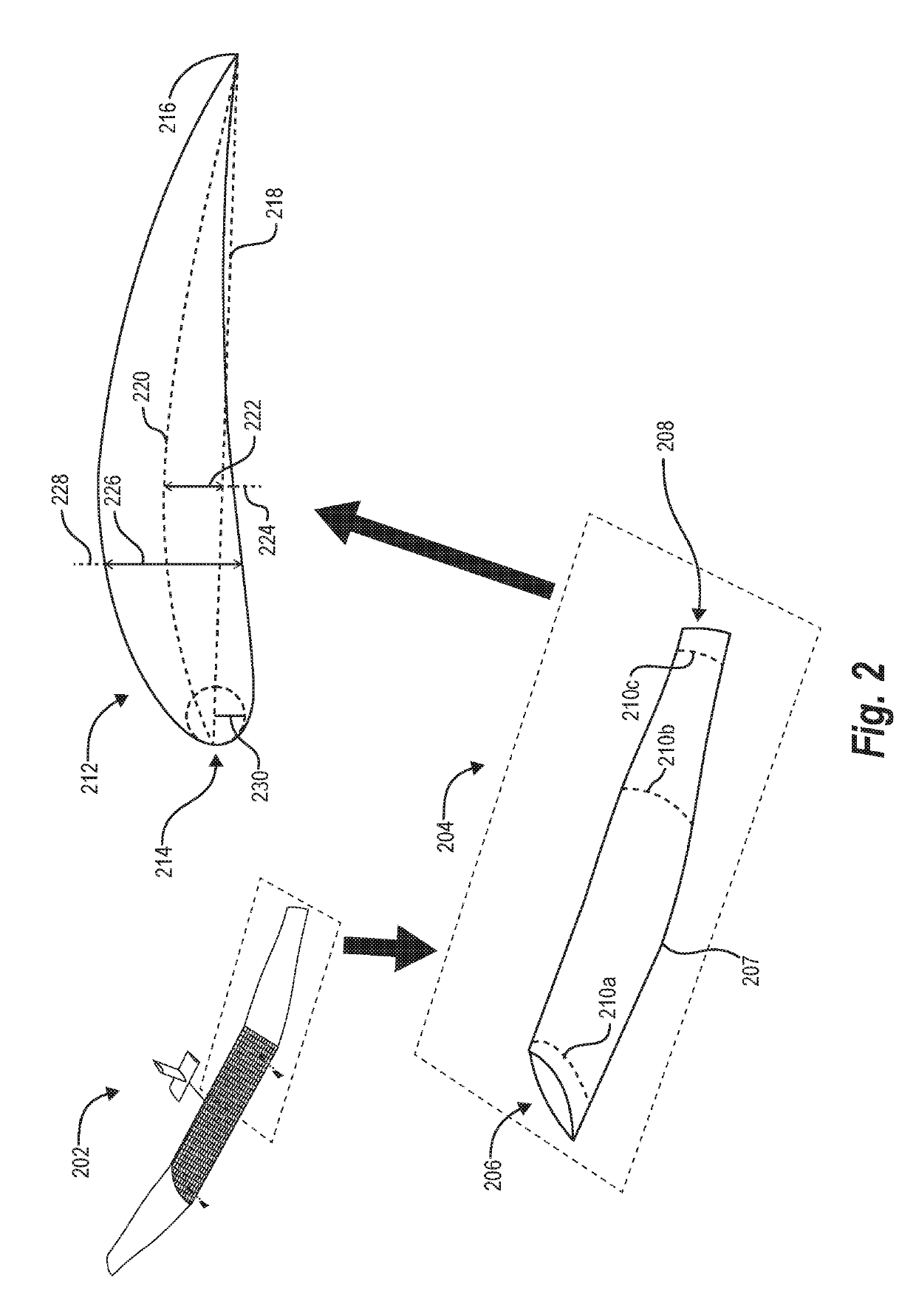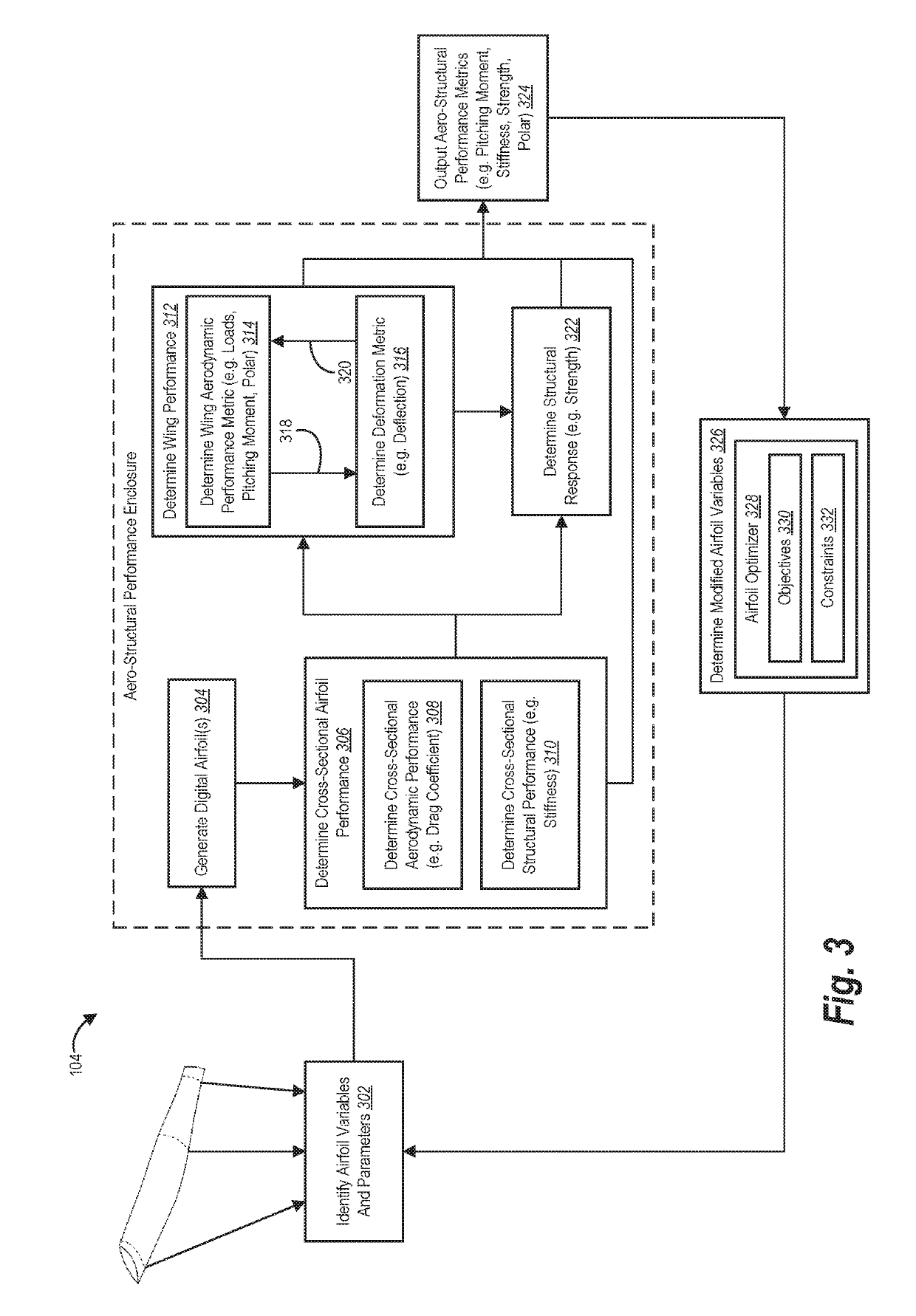Automatic airfoil and wing design based on dynamic modeling of structural and aerodynamic performance
a technology of aerodynamic performance and automatic airfoil, which is applied in the direction of multi-objective optimisation, instruments, cad techniques, etc., can solve the problems of requiring the requirements of every aircraft subsystem, failure of one or more aircraft subsystems, and difficult and expensive generation of new aircraft designs, so as to improve the aerodynamic functionality of the aircraft, reduce the overall weight of the aircraft, and improve the effect of wing design
- Summary
- Abstract
- Description
- Claims
- Application Information
AI Technical Summary
Benefits of technology
Problems solved by technology
Method used
Image
Examples
Embodiment Construction
[0017]One or more embodiments of the present disclosure include an airfoil design system that generates a model aircraft wing by modifying quantitative design variables of one or more airfoils based on joint analysis of aerodynamic and structural performance. In particular, the airfoil design system can automatically generate a modified wing design by modeling detailed trade-offs between airfoil shape versus structural performance and weight. For instance, in one or more embodiments, the airfoil design system utilizes input design variables to determine cross-sectional aerodynamic and structural performance metrics for airfoils. Based on these cross-sectional performance metrics for the airfoils, the airfoil design system can iteratively determine wing aerodynamic performance and deformation metrics (across the span of the wing). In this manner, the airfoil design system can model the wing under performance loads to determine various aero-structural performance metrics. In one or mo...
PUM
 Login to View More
Login to View More Abstract
Description
Claims
Application Information
 Login to View More
Login to View More - R&D
- Intellectual Property
- Life Sciences
- Materials
- Tech Scout
- Unparalleled Data Quality
- Higher Quality Content
- 60% Fewer Hallucinations
Browse by: Latest US Patents, China's latest patents, Technical Efficacy Thesaurus, Application Domain, Technology Topic, Popular Technical Reports.
© 2025 PatSnap. All rights reserved.Legal|Privacy policy|Modern Slavery Act Transparency Statement|Sitemap|About US| Contact US: help@patsnap.com



